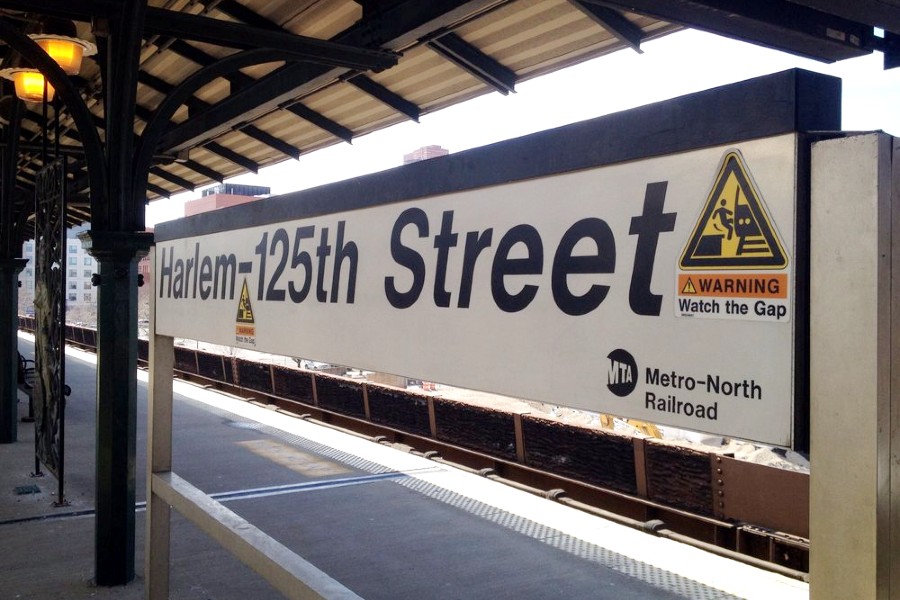
Today, the New York City Landmarks Preservation Commission (LPC) launched Portico.
Portico a new web-based permit application portal that provides a user-friendly customer experience for owners of landmark buildings applying for permits to do work on their designated properties. Portico streamlines the application process and offers increased transparency by making it easier to file an application, allowing multiple users to access the same application, and offering access to detailed status updates from start to finish.
Owners of landmark properties will be able to use Portico for every aspect of the permitting process, from filing new applications to uploading supporting documentation and receiving final permits. Portico removes any uncertainty over which application to use by asking users a series of simple questions and then directing them to the appropriate permit, including automatically determining whether their application qualifies for one of LPC’s expedited review services. In addition, Portico offers increased accessibility, designed to enable both property owner and their representatives to access information and status updates about the application in greater detail than ever before.
LPC’s Portico represents a transformation of LPC’s permitting process: after decades of a paper-only permitting process, LPC only recently transitioned to an email application process. First announced in Mayor Eric Adams’ “Rebuild, Renew, Reinvent: A Blueprint for New York City’s Economic Recovery,” Portico is the latest in a series of LPC initiatives designed to support both the city’s economic development goals and the agency’s own customer experience efforts by ensuring efficiency, transparency, and accessibility across all aspects of the agency’s regulatory work.
Portico has been designed to optimize the user experience across every stage of the application process.
- Designed for Teams: Owners of landmark-designated properties and their applicant team will be able to use Portico for everything from filing applications for new permits or amending existing ones, to uploading supporting documentation (photographs, architectural plans, presentations), requesting notices of compliance, and receiving final permits and approved drawings.
- Ease of Use: Portico removes any uncertainty over which application form to use. It employs an application assistant, or “wizard,” for all applications, asking applicants a series of simple questions to direct them to the correct application process and the required materials to support the application. Portico will also automatically alert applicants if they qualify for one of LPC’s expedited review services (FasTrack or Expedited Certificate of No Effect), as well as LPC’s Business Express, a one-stop shop for business owners in landmark buildings that includes a dedicated hotline and team who offer pre-application consultation and focused application review.
- Enhanced Status Updates: Applicants will be able to log into Portico to view the status of their application in greater detail than ever, and since it is designed to allow multiple users to access the same application, property owners and their representatives will have the same access to detailed status updates throughout every stage of the process.
“To celebrate the full history of our city while also building for the future, New York City’s historic landmarks deserve modern, state-of-the-art technical support,” said Deputy Mayor for Housing, Economic Development and Workforce Maria Torres-Springer. “The Landmarks Preservation Commission’s new, consumer-friendly portal for landmarked buildings permitting will ensure the timely review of applications, increased transparency, and faster service delivery to support the Adams’ administration’s efforts to ‘Get Stuff Built.’”
“The launch of Portico represents a transformation of the Commission’s permitting process – and the latest example of the Commission’s commitment to ensuring transparency, efficiency, and accessibility across every aspect of the agency’s work,” said Landmarks Preservation Commission Chair Sarah Carroll. “Portico is designed to reflect the needs of property owners today by making it easier and more efficient to file for permits for work on New York City’s landmark buildings and sites, and will serve as a powerful tool in our shared mission to safeguard our city’s historic resources in the years to come. Our thanks to the Office of Technology and Innovation for their partnership as we worked to develop Portico.”
“The launch of Portico streamlines paperwork and modernizes how the Landmarks Preservation Commission interacts with applicants,” said “Get Stuff Built” Executive Director Robert Holbrook. “This permit portal will provide a clear road map for property owners to follow through the permitting process, speeding up the submission process, and letting building owners know what to expect and when.”
“The Office of Technology and Innovation is proud to support city agencies and organizations on their efforts to provide New Yorkers with more user-friendly interactions with their government,” said Steven Bezman, Deputy Commissioner of Applications, Office of Technology and Innovation. “LPC’s Portico modernizes the landmarks permitting process by providing building owners with an optimized digital experience that makes it easier to file, access, and receive status updates on applications.”
Portico is intended as a resource for owners of designated landmark properties, who can access more information on getting started on Portico on LPC’s website. Portico is the latest in a series of recent agency technology upgrades designed to provide enhanced access and increased transparency for both applicants and members of the public. The public can access information about LPC permits and violation data on the LPC’s Permit Application Finder map. LPC recently added enhanced violation data on that site in fulfillment of the goals of the Adams Administration’s Vulnerable Buildings Action Plan.
LPC’s Portico takes its name from a classical design element commonly found on civic and public buildings in New York City. A portico is a porch that leads to a building’s entrance, and is supported by columns or enclosed by walls, and it can also be extended as a colonnade. LPC’s Portico provides the same sense of openness and clear pathway that defines porticos in architecture.
The Landmarks Preservation Commission (LPC)
The Landmarks Preservation Commission is the mayoral agency responsible for protecting and preserving New York City’s architecturally, historically, and culturally significant buildings and sites. Since its creation in 1965, LPC has granted landmark status to more than more than 37,900 buildings and sites, including 1,460 individual landmarks, 121 interior landmarks, 11 scenic landmarks, and 156 historic districts and extensions in all five boroughs. For more information, visit www.nyc.gov/landmarks and connect with us at www.facebook.com/NYCLandmarks and www.twitter.com/nyclandmarks.
Become a Harlem Insider!
By submitting this form, you are consenting to receive marketing emails from: Harlem World Magazine, 2521 1/2 west 42nd street, Los Angeles, CA, 90008, https://www.harlemworldmagazine.com. You can revoke your consent to receive emails at any time by using the SafeUnsubscribe® link, found at the bottom of every email. Emails are serviced by Constant Contact








